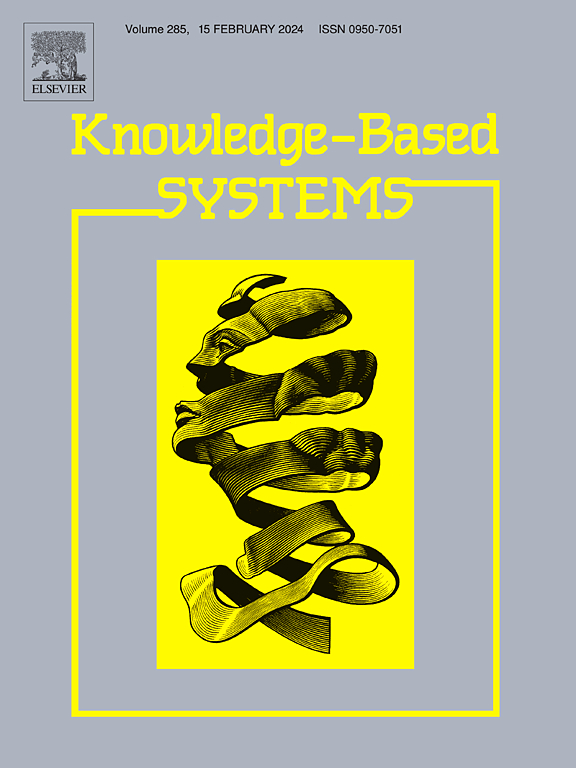利用测井资料进行岩性识别的多域掩码重建自监督学习
IF 7.2
1区 计算机科学
Q1 COMPUTER SCIENCE, ARTIFICIAL INTELLIGENCE
引用次数: 0
摘要
岩性识别在能源勘探和油气钻井领域至关重要,特别是非常规油气藏,岩性的复杂性和非均质性给勘探带来了巨大挑战。为了解决标记数据稀缺和岩性识别模型精度低的双重挑战,本研究提出了一种新的双域掩膜重建自监督学习(MR-SSL)框架。该框架包括两个阶段:自我监督预训练和监督微调,以显著提高仅使用少量标记样本的岩性识别的准确性。在预训练阶段,我们设计了三个创新的任务:时域和频域掩模重建和时频对比学习,每个任务都由专门设计的损失函数支持。时域和频域掩模重建任务通过差异化设计实现了多维特征建模,前者结合跨深度和跨参数动态掩模策略,基于周期分析自适应捕捉地层非平稳性,后者通过共享-私有嵌入机制同步学习单参数特异性和多参数相关性。这些任务与时频对比学习任务相结合,通过跨域特征一致性约束增强了模型的互补性。在监督微调阶段,冻结预训练好的编码器,整合时频特征,训练分类头,进一步增强模型针对目标地质条件进行岩性分类的能力。实验验证表明,在仅使用20%标记数据的情况下,MR-SSL模型在两种不同油田数据集上的准确率分别达到了98.7%和97.07%,优于传统的监督和自监督方法。该模型具有独特的优势:通过多任务协作,实现测井数据时频特征的深度解耦和互补利用,从而为非常规储层岩性识别提供高效的低标签解决方案。本文章由计算机程序翻译,如有差异,请以英文原文为准。
Multi-domain masked reconstruction self-supervised learning for lithology identification using well-logging data
Lithology identification is crucial in the fields of energy exploration and oil and gas drilling, particularly for unconventional reservoirs, wherein the complexity and high heterogeneity of rock formations pose significant challenges for prospecting and exploration. To address the dual challenges of scarcity of labeled data and low accuracy of lithology identification models, in this study, we proposed a novel dual-domain masked reconstruction self-supervised learning (MR-SSL) framework. This framework comprised two stages: self-supervised pretraining and supervised fine-tuning, to significantly improve the accuracy of lithology identification using only a small number of labeled samples. In the pretraining stage, we designed three innovative tasks: time- and frequency-domain masked reconstruction and time–frequency contrastive learning, with each supported by a specifically designed loss functions. The time- and frequency-domain masked reconstruction tasks achieved multi-dimensional feature modeling through differentiated designs: the former combined cross-depth and cross-parameter dynamic masking strategies to adaptively capture stratigraphic non-stationarity based on periodic analysis, whereas the latter synchronously learned single-parameter specificity and multi-parameter correlation through a shared-private embedding mechanism. These tasks, in conjunction with the time–frequency contrastive learning task, provided the model enhanced complementarity through cross-domain feature consistency constraints. In the supervised fine-tuning stage, the pretrained encoder was frozen, time–frequency features were integrated, and classification head was trained, further enhancing the model’s capability of lithology classification, with respect to the target geological conditions. Experimental validation demonstrated that the MR-SSL model achieved high accuracy of 98.7% and 97.07% for two different oilfield datasets, while using only 20% labeled data, surpassing the performances of conventional supervised and self-supervised methods. The proposed model presents a unique advantage: it enables the deep decoupling and complementary utilization of time–frequency features in logging data through multi-task collaboration, thereby providing an efficient low-label solution for lithology identification for unconventional reservoirs.
求助全文
通过发布文献求助,成功后即可免费获取论文全文。
去求助
来源期刊

Knowledge-Based Systems
工程技术-计算机:人工智能
CiteScore
14.80
自引率
12.50%
发文量
1245
审稿时长
7.8 months
期刊介绍:
Knowledge-Based Systems, an international and interdisciplinary journal in artificial intelligence, publishes original, innovative, and creative research results in the field. It focuses on knowledge-based and other artificial intelligence techniques-based systems. The journal aims to support human prediction and decision-making through data science and computation techniques, provide a balanced coverage of theory and practical study, and encourage the development and implementation of knowledge-based intelligence models, methods, systems, and software tools. Applications in business, government, education, engineering, and healthcare are emphasized.
 求助内容:
求助内容: 应助结果提醒方式:
应助结果提醒方式:


